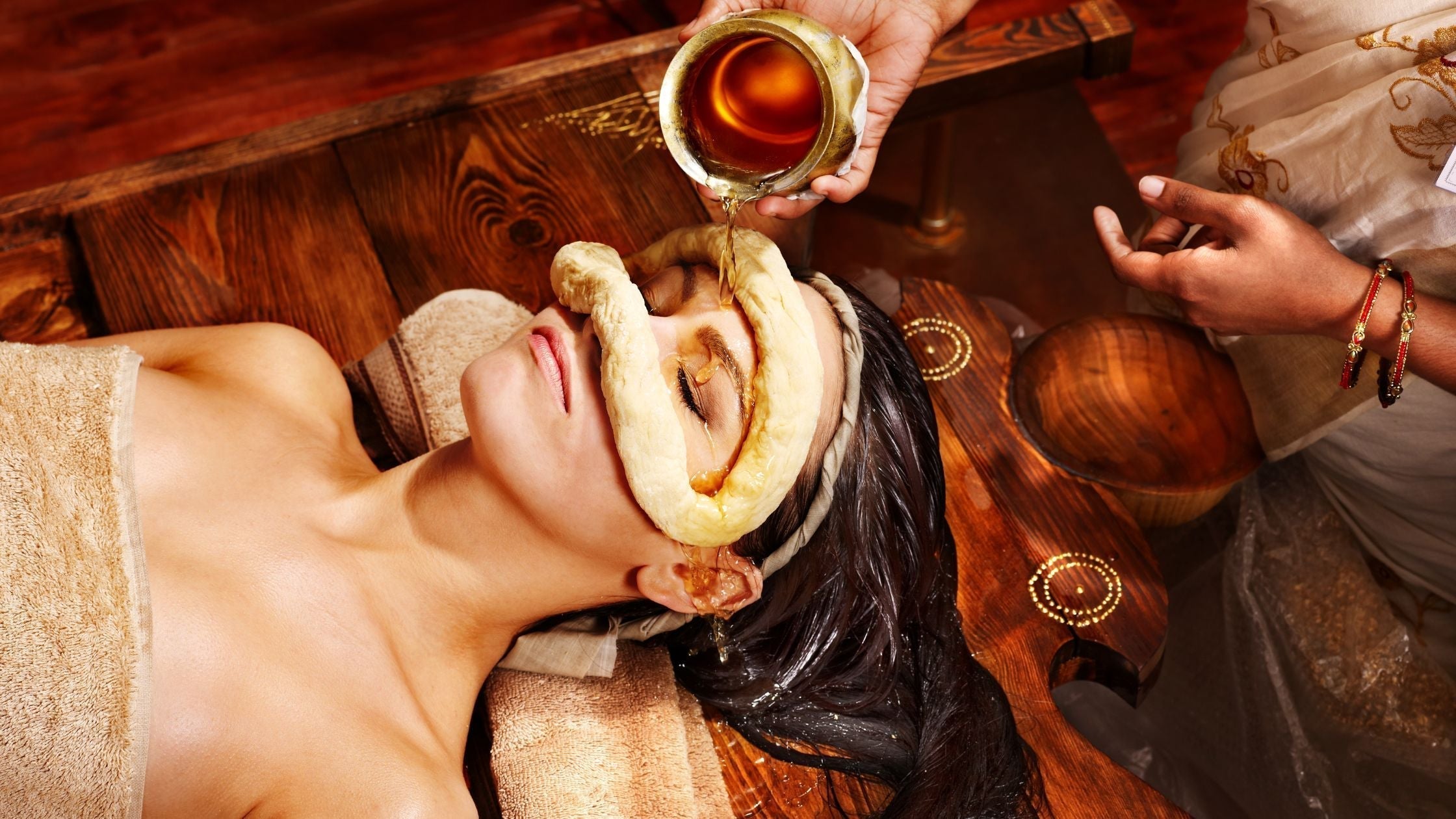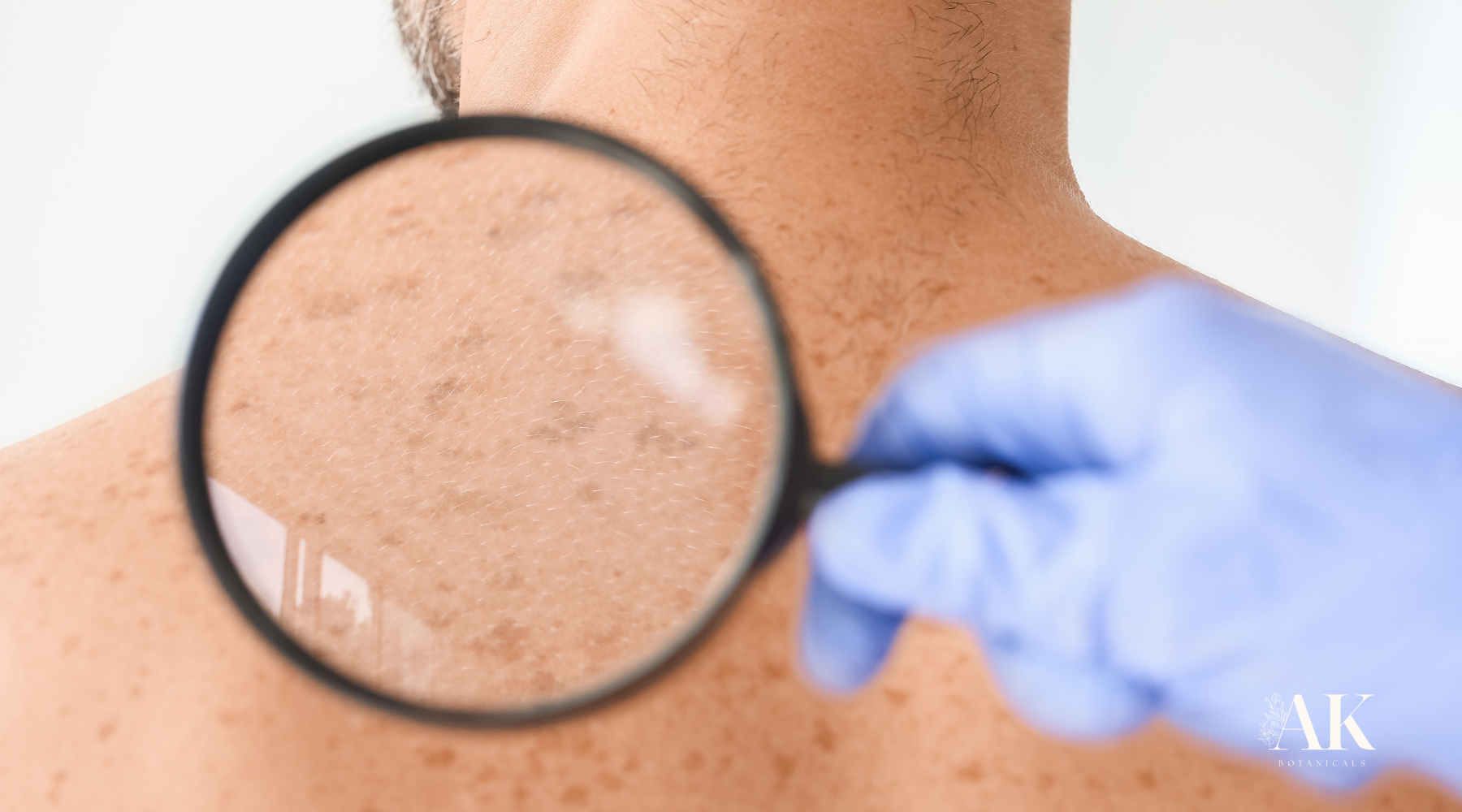
Ayurvedic Medicine for Actinic Keratosis: A Natural Way to Heal Your Skin
Actinic keratosis (AK), also called solar keratosis, is a common skin condition caused by long-term sun exposure. It shows up as rough, scaly patches and most often appears on the face, ears, neck, and hands.
While medical evaluation is essential, many people also like to explore natural options to support their skin health. Ayurveda — an ancient system of wellness from India — offers guidance for people looking for plant-based and traditional approaches to actinic keratosis care.
Important Note: While AK may progress if not addressed early, it’s important to seek a dermatologist’s guidance to evaluate the condition and explore appropriate options.
What Causes Actinic Keratosis?
In Ayurveda, conditions like AK are linked to an imbalance in the Pitta dosha, which controls heat and metabolism. Prolonged sun exposure increases internal heat and inflammation, weakening the skin’s ability to renew itself.
When Vata is also involved, dryness and roughness may occur. Ayurvedic approaches aim to support balance by cooling the body, encouraging internal cleansing, and nourishing the skin.
Ayurvedic Ingredients and Practices That May Support Skin Health
Aloe Vera (Kumari)
Known for its cooling and soothing properties, aloe vera is traditionally used to calm the appearance of irritated skin. It may help support the skin’s natural hydration.
Turmeric (Haridra)
Curcumin, the active compound in turmeric, has been widely studied for its antioxidant properties. In traditional use, turmeric is incorporated to help support skin clarity and comfort.
Neem (Nimba)
Used in Ayurveda to promote clear skin, neem is often applied topically as an oil or paste to support skin wellness.
Gotu Kola (Centella Asiatica)
This herb is valued for its traditional use in supporting the skin’s natural appearance and resilience.
Licorice Root (Mulethi)
Traditionally used in Ayurveda to help calm the skin, licorice root may support comfort when used as part of herbal preparations.
Kanuka Honey
This honey, a relative of manuka, has been studied for its antimicrobial properties. It may help support the skin’s barrier and overall wellness when used topically as part of a skincare routine.
AKti-Clear: A Botanically Infused 3-Day Solution
AKti-Clear is a plant-based, Botanically Infused solution designed for use on non-melanoma skin lesions, including actinic keratosis and sun-damaged skin. Applied once daily for three days, AKti-Clear uses ingredients like Sanguinaria canadensis (bloodroot) and Annona muricata (graviola) to selectively act on abnormal skin cells while preserving healthy tissue.
While AKti-Clear presents a promising alternative solution, it’s essential to consult with a dermatologist. Understanding the severity of your actinic keratosis and discussing all available options will help ensure that you choose the most effective and safe approach for your skin’s health.
Diet, Lifestyle, and Prevention: Holistic Support for Skin Health
Hydrating Foods and Soothing Herbs
Ayurveda recommends cooling, hydrating foods such as cucumber, coconut, and leafy greens. Herbal teas featuring ingredients like fennel or coriander are often used in traditional wellness routines.
Limiting Irritating Foods
Reducing overly spicy, processed, or fried foods is a common recommendation in Ayurveda to help balance internal heat.
Skin-Friendly Habits
Hydration, regular gentle oil massage (Abhyanga), wearing protective clothing, and avoiding peak sun hours are all steps that may support skin wellness.
When to See a Skin Doctor
It’s crucial not to rely solely on natural remedies for a treatment plan. Always consult a dermatologist to confirm the diagnosis and discuss medical options. Depending on severity, you may need a drug or prescription ointment. Some patients qualify for Medicare coverage for dermatological treatment.
A report from the American Academy of Dermatology estimates that professional treatments such as cryotherapy or photodynamic therapy have 70–90% efficacy in clearing actinic keratosis lesions.
Combining medical options with Ayurvedic care gives a well-rounded approach. Personalized plans can be designed in consultation with both your doctor and an Ayurvedic practitioner.
What Natural Remedies Can — and Cannot — Do
While herbs, oils, and diet can support healing, it’s important to be realistic about what natural remedies can accomplish:
-
They may support the treatment of actinic lesions, but will not cure skin cancer.
-
They cannot replace prescription medicines or in-office procedures.
-
They require time, consistency, and correct use.
-
They should be part of a larger care plan that includes checkups, patient education, and responsible skincare.
The Importance of Personalized Care
In Ayurveda, no two people are alike. What works for one person may not work for another. You can consult an Ayurvedic expert or certified org to help create a plan tailored to your unique constitution and lifestyle.
Clinical and Holistic Resources
Ayurveda emphasizes the uniqueness of each individual. Consulting a knowledgeable Ayurvedic practitioner can help tailor a supportive plan that aligns with your constitution and lifestyle.
Clinical and Educational Resources
Trusted sources like PubMed and clinicaltrials.gov provide information about ongoing research into herbs and botanicals. These platforms offer reference points for individuals exploring integrative approaches to skincare.
While herbs, dietary adjustments, and traditional practices may offer support, they should always be paired with professional guidance. Maintaining a skincare routine that includes sun protection, nourishing foods, and regular checkups lays the foundation for long-term skin wellness.




